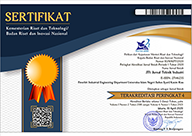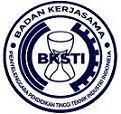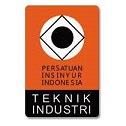Decision-Making Analysis on The Credit Card Partnership Program Using Kepner-Tregoe and Smart Technique Approaches
Abstract
This study analyzes the root causes of underperformance in PT Bank XYZ’s credit card partnership program with F&B merchants. Using the Kepner-Tregoe (KT) Problem Solving Framework and the SMART (Simple Multi-Attribute Rating Technique), the research adopts an exploratory-descriptive qualitative approach involving Forum Group Discussions (FGDs) with internal stakeholders. The analysis identified two main problems: weak internal coordination between the EDC and Marketing teams, and low merchant and cashier engagement in executing promotional programs. Three alternative solutions were evaluated: (1) Integrated Merchant Engagement Program, (2) Internal KPI Synchronization Framework, and (3) Real-Time Performance Dashboard. The SMART evaluation determined the first alternative as the most effective, with the highest score (4.3), based on impact, feasibility, and ROI. The solution includes digital training, promotional kits, and incentive systems to enhance cashier performance. Supporting frameworks and monitoring systems were also proposed to ensure sustainable impact. The findings emphasize the importance of data-driven decision making, internal alignment, and proactive merchant involvement to enhance the success of banking partnership programs. This study contributes to strategic decision-making literature in the financial services sector by demonstrating the effective integration of KT and SMART to resolve operational inefficiencies.
Keywords: Kepner-Tregoe, SMART Technique, Credit Card Partnership, Decision Analysis, Banking Strategy
Full Text:
PDFReferences
Ibn-Mohammed T et al., “A critical analysis of the impacts of COVID-19 on the global economy and ecosystems and opportunities for circular economy strategies,” Resort Conserv Recycle, 2021.
S. M. Indrawati, E. Satriawan, and Abdurohman, “Indonesia’s Fiscal Policy in the Aftermath of the Pandemic,” Bull Indones Econ Stud, vol. 60, no. 1, pp. 1–33, Jan. 2024, doi: 10.1080/00074918.2024.2335967.
P. Warjiyo, “Editorial 18 Bulletin of Monetary Economics and Banking (BMEB) International Conference and Call for Papers 2024,” Bulletin of Monetary Economics and Banking, vol. 28, no. 0, pp. vii–xi, Feb. 2025, doi: 10.59091/2460-9196.2506.
M. H. Yudhistira, B. P. S. Brodjonegoro, and R. M. Qibthiyyah, “Unlocking Urban Potential,” Bull Indones Econ Stud, vol. 60, no. 2, pp. 129–159, May 2024, doi: 10.1080/00074918.2024.2389492.
Ferozi Ramdana Irsyad, Filja Azkiah Siregar, Jonatan Marbun, and Hasyim Hasyim, “Menghadapi Era Baru: Strategi Perbankan Dalam Menghadapi Perubahan Pasar Dan Teknologi di Indonesia,” Transformasi: Journal of Economics and Business Management, vol. 3, no. 2, pp. 29–46, May 2024, doi: 10.56444/transformasi. v3i2.1594.
F. H. Al-Dmour, R. Asfour, and Al-Dmour, “Validation of the impact of marketing knowledge management on business performance via digital financial innovation as a mediating factor,” VINE Journal of Information and Knowledge Management Systems, pp. 33–56, 2022.
S. R. Baker, R. A. Farrokhnia, S. Meyer, M. Pagel, and C. Yannelis, “How Does Household Spending Respond to an Epidemic? Consumption during the 2020 COVID-19 Pandemic,” The Review of Asset Pricing Studies, vol. 10, no. 4, pp. 834–862, Dec. 2020, doi: 10.1093/rapstu/raaa009.
V. M. Carvalho et al., “Tracking the COVID-19 crisis with high-resolution transaction data,” R Soc Open Sci, vol. 8, no. 8, Aug. 2021, doi: 10.1098/rsos. 210218.
A. Horvath, B. Kay, and C. Wix, “The COVID-19 shock and consumer credit: Evidence from credit card data,” J Bank Financ, vol. 152, p. 106854, Jul. 2023, doi: 10.1016/j.jbankfin.2023.106854.
D. Biber, S. Johansson, G. Leech, S. Conrad, E. Finegan, and R. Quirk, Longman grammar of spoken and written English. London: Longman, 1999.
X. Guo, Z. Yang, J. Sun, and Y. Zhang, “Impact pathways of emerging ITs to mitigate supply chain vulnerability: A novel DEMATEL-ISM approach based on grounded theory,” Expert Syst Appl, vol. 239, p. 122398, Apr. 2024, doi: 10.1016/j.eswa.2023.122398.
M. Sandelowski, “Whatever Happened to Qualitative Description?” Res Nurs Health, vol. 23, no. 4, pp. 334–340, 2000.
L. A., et al. Sehularo, “A Theoretical Framework for Exploratory-Descriptive Qualitative Research,” Journal of Nursing and Health Sciences, vol. 15, no. 3, pp. 44–1, 2012.
J. W. Creswell, Research Design: Qualitative, Quantitative, and Mixed Methods Approaches. Thousand Oaks, CA: SAGE Publications, 2014.
C. Wu, C. B. Weinberg, Q. Wang, and J. Y. C. Ho, “Administrative trade barrier: An empirical analysis of exporting Hollywood movies to China,” International Journal of Research in Marketing, vol. 39, no. 4, pp. 1253–1274, Dec. 2022, doi: 10.1016/j.ijresmar.2022.04.002.
S. Holifahtus Sakdiyah, N. Eltivia, and A. Afandi, “Root Cause Analysis Using Fishbone Diagram: Company Management Decision Making,” Journal of Applied Business, Taxation and Economics Research, vol. 1, no. 6, pp. 566–576, Aug. 2022, doi: 10.54408/jabter.v1i6.103.
M. Tavana and S. Banerjee, “Strategic Assessment Model (SAM): A Multiple Criteria Decision Support System for Evaluation of Strategic Alternatives*,” Decision Sciences, vol. 26, no. 1, pp. 119–143, Jan. 1995, doi: 10.1111/j.1540-5915.1995.tb00840.x.
S. Keremidchiev and О. Kaneva, “Strategicheski alternatives to development there civil sector v Bulgaria (Strategic Alternatives for Civil Sector Development in Bulgaria),” Economic Thought Journal, vol. 69, no. 2, pp. 164–169, 2024.
R. H. Simanjuntak and I. Isdaryanto, “Pressurization System on Aircraft Boeing 737-300F, Aircraft MSN: 28567 During Flight Hanoi to Bangkok: Problem Solving and Root Cause Analysis,” Journal of Mechanical, Civil and Industrial Engineering, vol. 3, no. 3, pp. 56–59, Nov. 2022, doi: 10.32996/jmcie.. 2022.3.3.7.
F. T. Pamungkas and A. A. Zulfikar, “Peran Otoritas Jasa Keuangan (OJK) dalam Mengawasi Adanya Fraud dalam Bisnis Investasi dalam Perspektif Hukum Ekonomi Islam,” Jurnal Penegakan Hukum dan Keadilan, vol. 2, no. 1, Apr. 2021, doi: 10.18196/jphk.v2i1.9507.
I. KOTLER, P., KARTAJAYA, H., AND SETIAWAN, Marketing 5.0: Technology for humanity. London: John Wiley & Sons, 2021.
K. N. Lemon and P. C. Verhoef, “Understanding Customer Experience Throughout the Customer Journey,” J Mark, vol. 80, no. 6, pp. 69–96, Nov. 2016, doi: 10.1509/jm. 15.0420.
Armstrong & Kotler, “Principles of Marketing,” New York: Pearson International, p. 735, 2018.
H. Taherdoost, “Sampling Methods in Research Methodology ; How to Choose a Sampling Technique for Research Hamed Taherdoost To cite this version : HAL Id : hal-02546796 Sampling Methods in Research Methodology ; How to Choose a Sampling Technique for,” International Journal of Academic Research in Management (IJARM), vol. 5, no. 2, pp. 18–27, 2016.
P. Kotler, H. Kartajaya, and I. Setiawan, “Marketing 5.0: Technology for Humanity,” Wiley, 2021.
DOI: http://dx.doi.org/10.24014/jti.v11i1.37413
Refbacks
- There are currently no refbacks.
Copyright (c) 2025 Rafly Aqsha Gultom, Manahan Parlindungan Sarigih Siallagan

This work is licensed under a Creative Commons Attribution-NonCommercial-ShareAlike 4.0 International License.
Jurnal Teknik Industri
P-ISSN 2460-898X | E-ISSN 2714-6235
Published by:
Industrial Engineering Department
Universitas Islam Negeri Sultan Syarif Kasim Riau, Indonesia
Office Address:
H.R. Soebrantas KM 15.5, Tampan, Pekanbaru, Riau, Indonesia 28293
email: jti.fst@uin-suska.ac.id
Indexed by:
JTI : Jurnal Teknik Industri under a Creative Commons Attribution-NonCommercial-ShareAlike 4.0 International License.

















